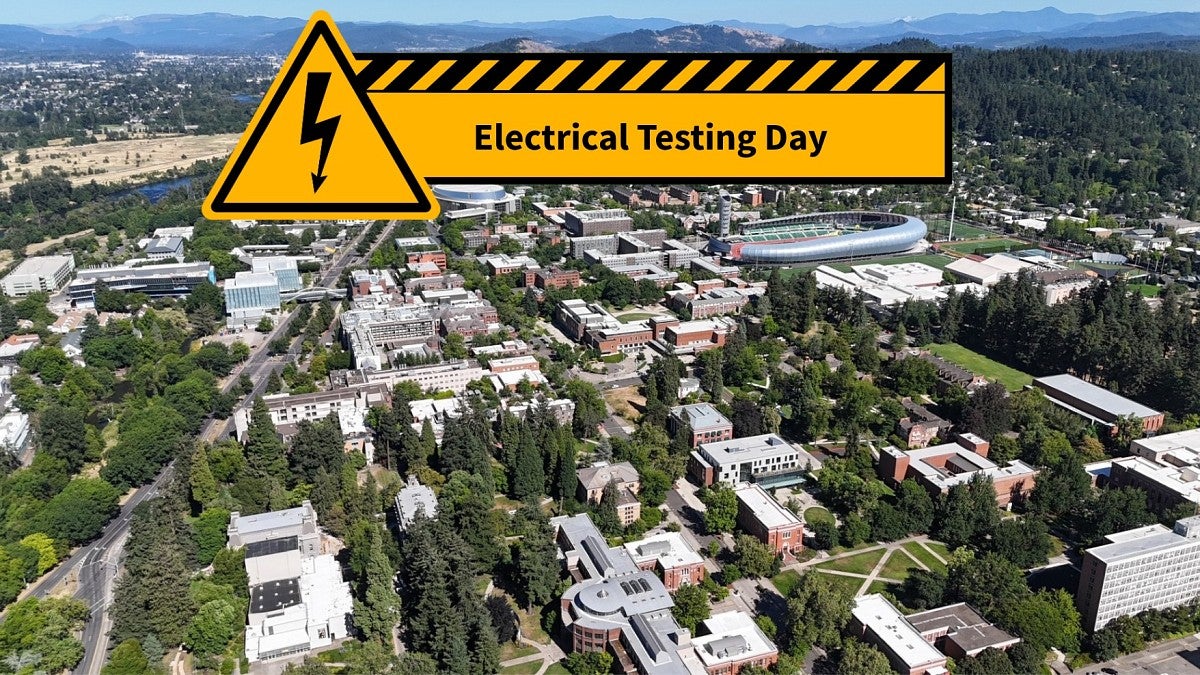The University of Oregon’s annual electrical testing event is a necessary step to ensure the the Eugene campus can smoothly transition from EWEB power to self-generated power and back to EWEB power without disruption to highly sensitive research equipment. It’s called “island mode” and is a critical capability for world-class research facilities.
“Island mode” may seem like a state of vacation bliss but in the utilities world it’s all about a level of resiliency that Steve Mital, Paul Langley and Rick Tabor want the UO to be able to rely on. They start planning a year in advance leading up to electrical testing day.
Mital, Langley and Tabor lead the utilities and energy team within Campus Planning and Facilities Management. The team is responsible for providing heating, cooling and power to the Eugene campus no matter what. Most days it relies on EWEB and NW Natural to provide electricity and gas, but it needs to be ready to heat, cool and power campus for short periods on its own. UO tests as part of emergency preparedness planning to minimize disruption to the greatest extent possible when power outages occur or during storms or a catastrophic event.
“Islanding” is the process of severing the connection to EWEB while simultaneously connecting to UO generators without measurable disruption to sensitive equipment on campus. A successful transition happens so fast, not even UO’s most sensitive piece of equipment on campus flickers. Over a dozen tests will be performed Aug. 6 between 8 a.m. and 3 p.m.
In addition to campuswide testing, certain buildings are shut down for maintenance.
Prior to electrical testing day, Tabor and his team select which building’s transformers and other electrical equipment are due for critical maintenance.
Tabor, as the electrical superintendent, will be on the ground in the control center and literally under the ground in the tunnels on the day of the tests troubleshooting with the electrical engineers who designed the system. Successful tests will be undetectable on campus. However, a failed test will result in a ten-second power outage and the troubleshooting continues.
“We know this is disruptive,” Mital said. “We appreciate the support we get from faculty and staff across campus as we work methodically to identify and fix problems with highly specialized equipment.”


